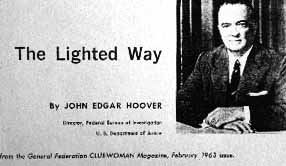
Changes in patterns of living, and social upheaval, figure
in this story. The shift away from downtowns and the growth of highway strips
where walking is not possible has caused such a devaluing of public space
that it's hard to get municipalities to think any streets are worthy of
lighting well.
Racism and poverty, too, have played a part. After Washington's
race riots in 1968, and with the new Nixon administration's endorsement,
this city became one of the first to use the then-new high-intensity, high-pressure
sodium light in what you may have heard called "riot corridors."
What was really happening -- though nobody saw it this way at the time --
was that black neighbourhoods were being red-lined with light. Places where
people lived, mostly in poorer areas, were losing any sense of intimacy
or privacy or normalcy they might have had, in the unimpeachable name of
safety and security. Furthermore, as the nation's capital, Washington had
set a new standard, and arguably established the precedent for lighting
practice that, to varying degrees, is now almost universal in the U.S. and
Canada.
J. Edgar Hoover's approval notwithstanding, whether all this bright light actually reduces crime or make places safer is one of the most contentious questions around. Ralph Waldo Emerson wrote that a lamp post is as good as a policeman. Others, like the U.S. Department of Justice, have found that very hard to prove. The argument is often made that if huge quantities of light simply make people feel safer, it is doing it's job, bringing more people out which actually will make places be safer. The fact that there is more light out there than ever before, but fewer people and even fewer who feel safer than before, is grounds for skepticism. I am inclined to believe that we are simply asking light to do too much, and doing it with too much bad light. Unwittingly we're hurting the very people and places we want to help. Again I quote Duany:
Security does not ensue from lighting. It ensues from having people on the street. It's other people on the street that make streets safe. People will be in the street if the street is pleasant. So in fact what these crime lights do is chase people away and intrinsically make streets unsafe.